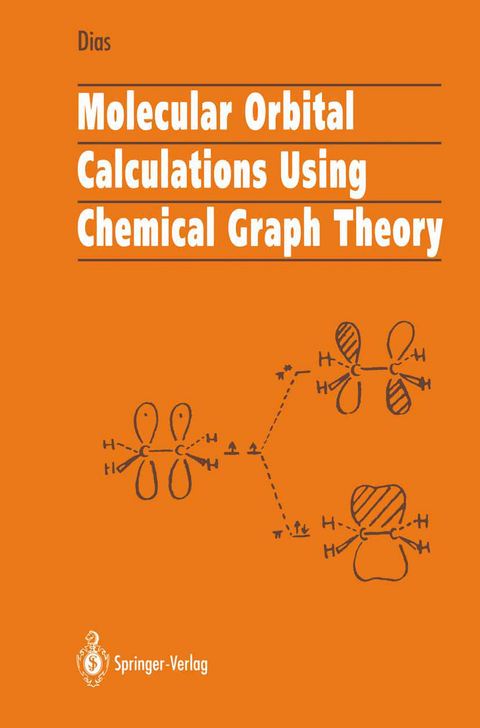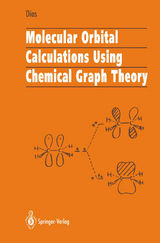Molecular Orbital Calculations Using Chemical Graph Theory
Das Buch vermittelt Lösungswege für Hückel-Molekülorbital-Berechnungen ohne komplizierte Computerprogramme. Viele Beispiele für konjugierte Systeme (Polyene, Heterocyclen, Metallorganische Verbindungen) erleichtern das Studium. Das Buch wendet sich an organische Chemiker im 2. Studienabschnitt und an Forscher, die rasch Moleküleigenschaften interpretieren wollen.
Professor John D. Roberts published a highly readable book on Molecular Orbital Calculations directed toward chemists in 1962. That timely book is the model for this book. The audience this book is directed toward are senior undergraduate and beginning graduate students as well as practicing bench chemists who have a desire to develop conceptual tools for understanding chemical phenomena. Although, ab initio and more advanced semi-empirical MO methods are regarded as being more reliable than HMO in an absolute sense, there is good evidence that HMO provides reliable relative answers particularly when comparing related molecular species. Thus, HMO can be used to rationalize electronic structure in 1t-systems, aromaticity, and the shape use HMO to gain insight of simple molecular orbitals. Experimentalists still into subtle electronic interactions for interpretation of UV and photoelectron spectra. Herein, it will be shown that one can use graph theory to streamline their HMO computational efforts and to arrive at answers quickly without the aid of a group theory or a computer program of which the experimentalist has no understanding. The merging of mathematical graph theory with chemical theory is the formalization of what most chemists do in a more or less intuitive mode. Chemists currently use graphical images to embody chemical information in compact form which can be transformed into algebraical sets. Chemical graph theory provides simple descriptive interpretations of complicated quantum mechanical calculations and is, thereby, in-itself-by-itself an important discipline of study.
1. Small Conjugated Polyenes.- 1.1 Introduction.- 1.2 Hückel Molecular Orbital Calculations.- 1.3 Graph Theoretical Terminology.- 1.4 Determining Characteristic Polynomials.- 1.5 Determining Select Eigenvalues by Embedding.- 1.6 Eigenvectors.- 1.7 References.- 1.8 Problems.- 2. Decomposition of Molecules with n-Fold Symmetry.- 2.1 Introduction.- 2.2 Decomposition of Molecules with 2-Fold Symmetry.- 2.3 Molecules with n-Fold Symmetry.- 2.4 References.- 2.5 Problems.- 3. Heterocyclic and Organometallic Molecules.- 3.1 Introduction.- 3.2 Heterocyclic and Related Molecules.- 3.3 Characteristic Polynomials of ?-Hydrocarbon-Iron Tricarbonyl Complexes.- 3.4 References.- 3.5 Problems.- 4. Large Conjugated Polyenes.- 4.1 Introduction.- 4.2 Molecular Orbital Solution of Buckminsterfullerene.- 4.3 MO Solution of 3-Fold Coronene Derivatives.- 4.4 Embedding of Benzenoid Hydrocarbons.- 4.5 References.- 4.6 Problems.- Appendix A. BASIC Program for Finding the Real Roots of a Monic Polynomial.- Compound Index.- General Index.
| Erscheint lt. Verlag | 19.5.1993 |
|---|---|
| Zusatzinfo | XI, 115 p. |
| Verlagsort | Berlin |
| Sprache | englisch |
| Maße | 155 x 235 mm |
| Gewicht | 214 g |
| Themenwelt | Mathematik / Informatik ► Mathematik ► Graphentheorie |
| Naturwissenschaften ► Chemie ► Organische Chemie | |
| Schlagworte | Fullerenes • Graphentheorie • Graphs • graph theory • Hückel-Molekülorbitale • Molekülorbital • Vertices |
| ISBN-13 | 9783540561347 / 9783540561347 |
| Zustand | Neuware |
| Informationen gemäß Produktsicherheitsverordnung (GPSR) | |
| Haben Sie eine Frage zum Produkt? |

